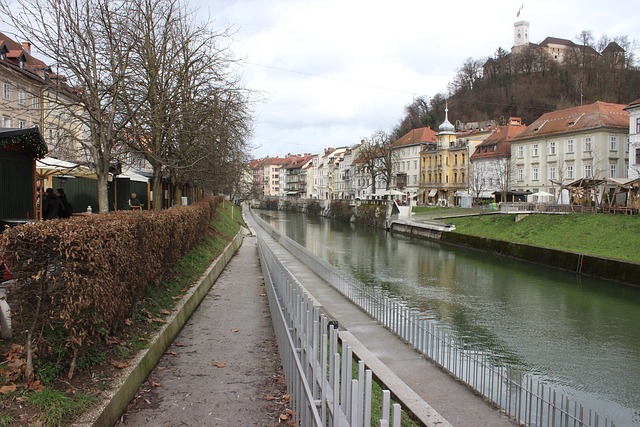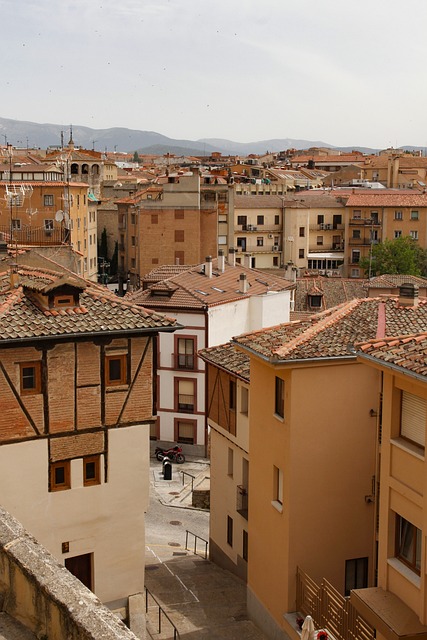Karachi's Civil Lines district is a treasure trove of historical architecture, showcasing the city's colonial and cultural evolution through unique heritage properties dating back to the 19th and early 20th centuries. Conservation efforts aim to protect these landmarks using traditional restoration techniques, balancing urban development with preserving Karachi's rich history for future generations.
Uncover Karachi’s hidden historical gems in the vibrant district of Civil Lines. This article explores the cultural significance of this heritage-rich area, highlighting its architectural marvels that date back to its colonial past. We delve into the conservation efforts aimed at preserving these structures and the unique challenges faced by Karachi’s heritage sector. Discover how initiatives to protect and promote these properties offer opportunities for sustainable development while honoring the city’s rich history.
- Uncovering Karachi's Historical Treasure: An Introduction to Heritage Properties in Civil Lines
- The Cultural Significance of Civil Lines District
- Architectural Marvels and Their Conservation Efforts
- Preserving the Past for Future Generations: Challenges and Opportunities in Karachi's Heritage Sector
Uncovering Karachi's Historical Treasure: An Introduction to Heritage Properties in Civil Lines

Karachi, a vibrant metropolis, is home to a rich historical tapestry woven with stories from various eras. Among its many treasures, heritage properties in Civil Lines stand out as a testament to the city’s diverse cultural influences and architectural evolution. These structures, ranging from colonial-era buildings to traditional Pakistani homes, offer a glimpse into Karachi’s past, making them invaluable assets for understanding and preserving the city’s unique identity.
Uncovering these historical treasures is akin to navigating a labyrinthine street where each corner reveals a new chapter of Karachi’s history. The heritage properties in Civil Lines showcase a blend of architectural styles, from the grand colonial mansions to the intricate details of traditional Pakistani architecture. They not only enhance the visual appeal of the area but also foster a deeper connection with the city’s past, making them essential for both locals and visitors seeking an authentic experience of Karachi’s rich cultural heritage.
The Cultural Significance of Civil Lines District

The Civil Lines district in Karachi holds immense cultural significance, offering a glimpse into the city’s rich history and architectural heritage. This historic area is a testament to the colonial past of the metropolis, showcasing a unique blend of British Raj-era structures and vibrant local traditions. The district’s name itself evokes a bygone era when civil administration and military lines were distinct entities, shaping the urban landscape as we know it today.
Karachi’s Civil Lines are not merely an architectural remnant but a living museum where art, culture, and history intertwine. The area boasts a diverse array of heritage properties, each telling its own story. From grand government buildings to charming residential bungalows, these structures reflect the architectural styles popular during the British rule, including Victorian, Gothic, and Indo-Saracenic designs. Today, preserving this district is crucial for Karachi’s cultural identity, ensuring that the city’s rich historical tapestry remains intact for future generations to appreciate and learn from.
Architectural Marvels and Their Conservation Efforts

Karachi, with its rich history, boasts a stunning collection of heritage properties that are architectural marvels. These structures, ranging from colonial-era buildings to traditional Pakistani homes, showcase a diverse range of styles and designs. Conservation efforts have been instrumental in preserving these marvels for future generations. The city’s civil lines, in particular, stand as testament to the region’s architectural evolution, with many properties dating back to the 19th and early 20th centuries.
Preservation initiatives focus on maintaining the original aesthetics while ensuring structural integrity. These efforts involve meticulous restoration work, using traditional building techniques where possible. The goal is not only to protect these iconic landmarks but also to educate the community about their historical significance. Karachi’s heritage properties tell stories of bygone eras, and their conservation ensures that these narratives remain intact for all to appreciate.
Preserving the Past for Future Generations: Challenges and Opportunities in Karachi's Heritage Sector

Preserving historical spaces is a delicate task, especially in vibrant cities like Karachi, where rapid urban development often threatens the remnants of its rich past. The heritage sector in Karachi faces unique challenges when safeguarding properties that hold cultural significance. One of the primary obstacles is the lack of awareness and appreciation among the general public, leading to potential neglect or destruction of these historic sites. However, it also presents an opportunity for a transformative dialogue—a chance to educate Karachians about their shared history and foster a sense of civic pride.
Through conservation efforts, the city can ensure that future generations inherit not just modern infrastructure but also a tangible connection to Karachi’s heritage. This involves creating sustainable practices, engaging local communities, and implementing legal protections. By doing so, the unique character of the city’s historical areas can be preserved, attracting tourists while providing a deeper understanding of Karachi’s diverse cultural landscape.
Karachi’s Civil Lines district stands as a testament to the city’s rich history, boasting architectural marvels that narrate tales of the past. The heritage properties here not only hold cultural significance but also present unique challenges and opportunities for conservation. By recognizing and protecting these invaluable assets, we ensure that Karachi’s legacy endures for future generations, allowing us to continue dancing with the ghosts of our collective past.
